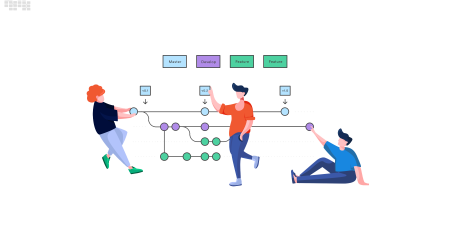Reasons Why Agile Fails and How to Fix It
What is Agile?
Agile software development is an iterative process. Instead of attempting to deliver the entire solution all at once, the goal is to build and deliver software incrementally based on feedback. Traditional methods, such as the software development life cycle (SDLC) or waterfall methodology, do not provide solutions as quickly and efficiently. By the end of a waterfall project – which can take years to complete – it is also likely that the delivered solution does not meet the needs of the users. This is a common issue in every IT department and software delivery company, which is why agile methodology is quickly becoming the new standard for projects requiring flexibility.
There are four major roles in the agile platform methodology: product owner, scrum master, developer, and end user or business team.
- The product owner’s role is to drive the solution’s vision. They must comprehend the process they must construct.
- The role of the scrum master is to remove impediments from the development team and to assist in any way that is possible.
- The development team consists of software engineers, quality assurance personnel, and anyone else involved in the solution’s creation.
- End users are those who use the final Agile application.
Mistakes to Avoid
Working with companies in healthcare, finance, education, government, and many other industries has taught me that each has its own take on agile. And, while every company must tailor processes to their specific group, there are a few common errors that I see time and again. Here are the top agile methodology implementation mistakes, as well as my recommendations for how to avoid them.
1.Your Team Miscommunicates and Lacks Trust
Lack of trust will destroy any team project; it is toxic to the workplace. Miscommunication is unavoidable during the agile process due to the large number of moving parts and people involved, as well as the pressure to deliver new features every 1-2 weeks.
As a result, transparency is critical. That entails setting reasonable deadlines and meeting them. Everyone should have the sense that they are working toward a common goal.
2.You Have a ScrumSlave Rather Than a ScrumMaster
The ScrumMaster must be of service to the team. This includes removing any impediments the development team may have, coaching the product owner and other stakeholders, and shielding the development team from politics and other distractions.
I’ve seen ScrumMasters try to dictate what the team does, micromanaging all activities on some projects. This type of leadership not only undermines team morale and demonstrates a lack of trust – it also prevents the team from achieving its objectives.
I’ve also seen the opposite scenario, in which the ScrumMaster is uninvolved. In this case, the individual may only attend meetings, leaving the individual clueless or unaware of what the team is doing.
The ScrumMaster should be approachable, aware of any issues that arise, and actively working to resolve them as soon as possible. They should be aware of the technology being developed and assist in any way they can.
3.Your Product Owner is More Like a Doormat
The product owner must have domain expertise, understand technology and business requirements, and have a product vision. This individual interacts with end users and the development team, directing everyone toward the required business solution. Given the nature of this position, you require someone who can act as a gatekeeper for user feedback, provide clear guidance, and manage expectations.
My client needed to go into production within 2-3 weeks on one of my first projects and needed assistance resolving bugs during the user acceptance phase. We were quickly fixing bugs as they appeared, but we noticed that a lot of user feedback was actually feature requests (not bug fixes)! Users were submitting feature requests within 2-3 weeks of the production deadline and expecting to receive everything. The product owner was not working with end users to manage expectations or to differentiate between a feature and a bug – they were simply passing information to the development team and expecting everything to be done. It’s not surprising that the project’s deadline kept getting pushed back.
It is critical for the product owner to drive the project vision and understand the business goal. They must, however, be firm and manage user expectations clearly. Otherwise, the project, or even phase one, will never be completed. This is where scope creep enters the picture.
4.Your Requirements Are Very Complex
The more complicated the project, the longer it takes and the more problems that arise. When dealing with complex requirements, it is critical that the development team, in collaboration with the ScrumMaster, plan and design the solution as thoroughly as possible. This entails breaking complex requirements down into smaller stories and iterating over time.
If the team notices any impediments or the ScrumMaster notices anything that will be a future roadblock, those issues should be raised ahead of time and a plan put in place. While it is impossible to account for every issue, it is important to understand that every change made to the app during iterations has a cost. Sometimes developers make significant changes late in the project. While developers may understand the implications of this change, end users assume that because it is agile, everything will be fine and will fix itself. However, adding more iterations and extending the deadline is the only way for a project to succeed.
5.Your Tools Aren’t as Agile as Your Team
Some tools are designed specifically for agile delivery. Choose your tool carefully that can help your team to success.
Agile Will Not Let You Down
To summaries, the agile methodology works best when there is trust among the team, “ideal” ScrumMasters and Product Owners who are eager to collaborate on the solution, and a combination of employing the appropriate tools and methodologies to streamline the process. Overall, each organization is unique, with its own culture and development strategies. For projects to succeed, there must be trust among firm employees and team members, as well as training and support when needed.













Leave a Reply